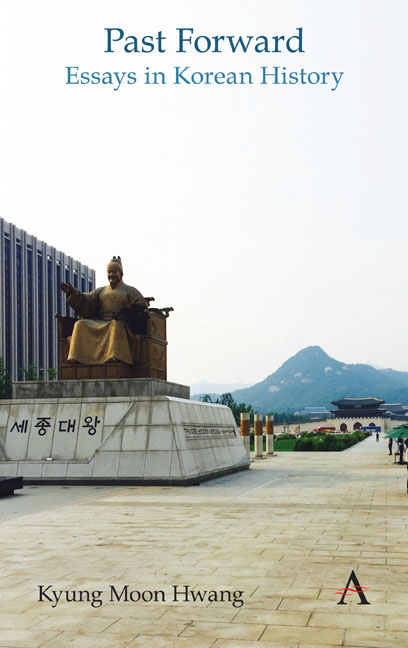Book contents
- Frontmatter
- Contents
- List of Figures
- Foreword
- Chronologies of Korean History
- Themes
- Acknowledgments
- Note on Romanization and Spelling
- Part I Circulating History
- Part II Durable Traditions
- Part III Ancient Remains
- Part IV Dynastic Depths
- Part V Modern Origins
- Part VI Challenges of Nationhood
- Part VII History Makers
- Part VIII External Presences
- 52 Korea's Complicated Relationship with China
- 53 How Chinese was Chinese History?
- 54 Tiananmen and the Power of History
- 55 Lotte between Korea and Japan
- 56 Comfort Women Beholden to History
- 57 A Modest Proposal for Dokdo
- 58 The General Sherman Incident of 1866
- 59 Depictions of the United States
- 60 Overcoming Old Views of Korea–United States Ties
- 61 Foreign Language Dependency
- Part IX Trials of Modernization
- Part X Gripped by the Past
- Index
61 - Foreign Language Dependency
from Part VIII - External Presences
- Frontmatter
- Contents
- List of Figures
- Foreword
- Chronologies of Korean History
- Themes
- Acknowledgments
- Note on Romanization and Spelling
- Part I Circulating History
- Part II Durable Traditions
- Part III Ancient Remains
- Part IV Dynastic Depths
- Part V Modern Origins
- Part VI Challenges of Nationhood
- Part VII History Makers
- Part VIII External Presences
- 52 Korea's Complicated Relationship with China
- 53 How Chinese was Chinese History?
- 54 Tiananmen and the Power of History
- 55 Lotte between Korea and Japan
- 56 Comfort Women Beholden to History
- 57 A Modest Proposal for Dokdo
- 58 The General Sherman Incident of 1866
- 59 Depictions of the United States
- 60 Overcoming Old Views of Korea–United States Ties
- 61 Foreign Language Dependency
- Part IX Trials of Modernization
- Part X Gripped by the Past
- Index
Summary
In a pregame exhibition for the Korean professional baseball All-Star Game in July 2016, a huge target was laid down on the field with very large promotional writing that read, “Tire Bank KBO All-Star Game” and “Bunt King,” and nothing else. That is, there was no lettering in the Korean language; in fact, an uninformed viewer would have little reason to know in what country this event was being held.
Many observers over the years have complained about South Koreans’ preoccupation with English, but often to bemoan their inability to master the language or to dedicate themselves to it. Perhaps this is the reason for the overcompensation that one finds almost everywhere in South Korean public life, such as television commercials that include English in some form and end with an affected native English voice-over of the product or slogan, as if to provide supreme authenticity. Just as comical are awkward constructions (“Konglish” is the term for these creations) in menu items or signs, as well as strained efforts to use the most exotic or esoteric English words and terms. A case in point: the South Korean baseball team “SK Wyverns,” in reference to a creature that, unbeknownst to most English speakers, is something like a dragon.
What appears as slavish devotion to a foreign language, though, is nothing new in Korea. We need only to be reminded of the 1,500 years of Chinese writing's dominance on the peninsula since ancient times, even though the Korean language is about as different from Chinese as it is from English. Granted, there were attempts to adapt Chinese writing to spoken Korean, one of which was Idu, a convoluted system in which individual Chinese ideographs stood for certain Korean syllables. Idu remained in use, at least in bureaucratic documents, up to the early twentieth century, but of course it was not suitable for nonspecialists.
And here we come to perhaps the most important reason behind the long domination of literary Chinese in Korean history: its utility as a marker for prestige and social status.
Information
- Type
- Chapter
- Information
- Past ForwardEssays in Korean History, pp. 177 - 179Publisher: Anthem PressPrint publication year: 2019
